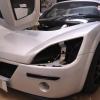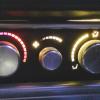We got a new consultant mechanical engineer at work, He used to work for Saab in the engine tuning department in Trollhättan Sweden.
He told me that when Saab planned for their new Saab 93 Aero, I think it was launched in 2006, they considered to use the Z20LET/Z20LEH engine. They ended up using a 2.8t V6 engine instead for that car.
(The engine block of our Ecotech Let engine is also used in Saab 93.)
Saab requirements for an engine were different compared to Opel/Vauxhall. Saab required a minimum of 100000 UK miles or 10 years without breaking down in their heavy load engine test rig while Opel/Vauxhall requires only 60000 for the same test setup.
In their test rigs the Saab engineers could only push the power of the Z20LET/Z20LEH up to 240 BHP while meeting their requirements. The problem were not the engine block itself or the turbo. Instead it was other internals that could not keep up with the temperatures generated under heavy load. Due to the safety margins Saab uses that meant that they would not be able to use more than 210 BHP in a commercial car with this engine.
This engineer recommended me to use an oil catch tank (which acts as a oil cooler and oil is always available in the oil pan for the engine) and consider upgrading internals for higher outputs if I would push it passed 240 BHP. Of course only if you want the engine to last longer than 60000 miles.
Another option is to use a full Saab engine instead like the guys at Swedish Trollspeed is building, 600 BHP, 442 lb/ft (600 Nm)
http://www.garaget.org/?car=88131
Do you have other knowledge/experience about this?
Edited by Mozen, 14 February 2012 - 11:49 PM.






















